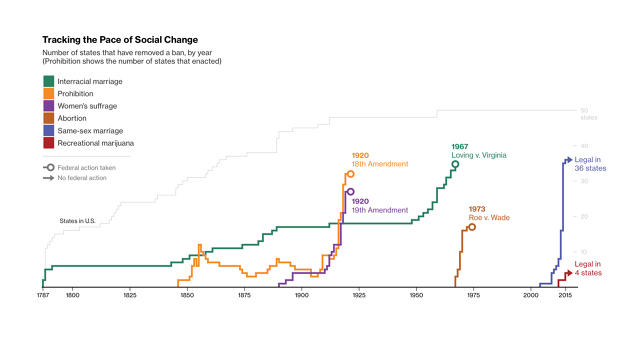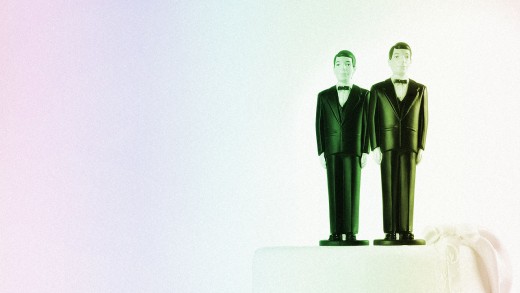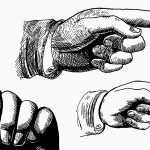Watch How Social alternate Has Swept–Or Slowly Rolled–throughout the us
How trade occurs: These infographics chart the development of modern social justice considerations—from homosexual marriage to ladies’s suffrage—as they received momentum.
April 29, 2015
In 2001, most american citizens antagonistic related-intercourse marriage. Now, because the Supreme court considers whether it will verify the fitting to related-intercourse marriages nationwide, 36 states have it on the books, and attitudes have flipped: 57% of the population antagonistic marriage equality in 2001, and these days fifty eight% strengthen it.
although it will look like a surprisingly fast evolution of social opinion, something equivalent has came about over and over within the U.S., as a sequence of infographics from Bloomberg displays.

Take the correct of girls to vote. In 1910, simplest four states allowed it; only a decade later, 23 more joined, leading to the passage of the 19th amendment. Prohibition additionally unfold quick: in the 14 years earlier than the usa briefly banned booze, 32 states decided to move dry.
different considerations, like interracial marriage, had a slower start, however an identical waves of strengthen. Abortion may have adopted a identical pattern, but Roe vs. Wade determined the difficulty prior to several states had considered it.
of course, though attitudes could appear to shift slightly fast, the initial swell of strengthen continuously takes a bit longer to grow. within the case of same-intercourse marriage, so much of the change happened because of one thing experts call “demographic metabolism”: As older folks pass away, they are being replaced by means of new generations with a special view on the problem.
“It turns out that the experience of younger folks in regards to gay rights could be very completely different from the expertise individuals had 60 or 70 years in the past, when homosexual people have been invisible,” says Michael Rosenfeld, an associate sociology professor at Stanford college, who has studied attitudes on comparable-intercourse marriage.
“60 years ago, possibly you do not have known if your neighbor was gay,” he says. “Now you do understand, and that helps individuals put their gay and lesbian neighbors and coworkers into the context of those are simply regular individuals. That makes the concept that they need a simple right like marriage rights sound no longer simplest cheap—however completely crucial.”
The shift in attitudes against same-sex marriage, then, has partly been a sluggish and steady trade over the last 30 or 40 years. but once it reached a undeniable tipping point—around 50% beef up—there used to be a handy guide a rough surge of new acceptance. “The people who find themselves not type of actually ideologically committed to 1 facet or the opposite see which approach the wind is blowing and so they move with that,” Rosenfeld says.
the next attitude shift in the works: Legalization of marijuana. As of now, only four states permit recreational use, however 24 enable medicinal pot. the only query is when the motion will hit the tipping point and the remainder will practice.
[prime picture: Marianne Campolongo via Shutterstock]
quick company , read Full Story
(121)














